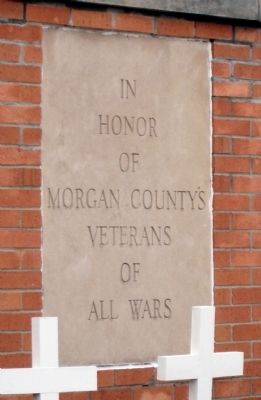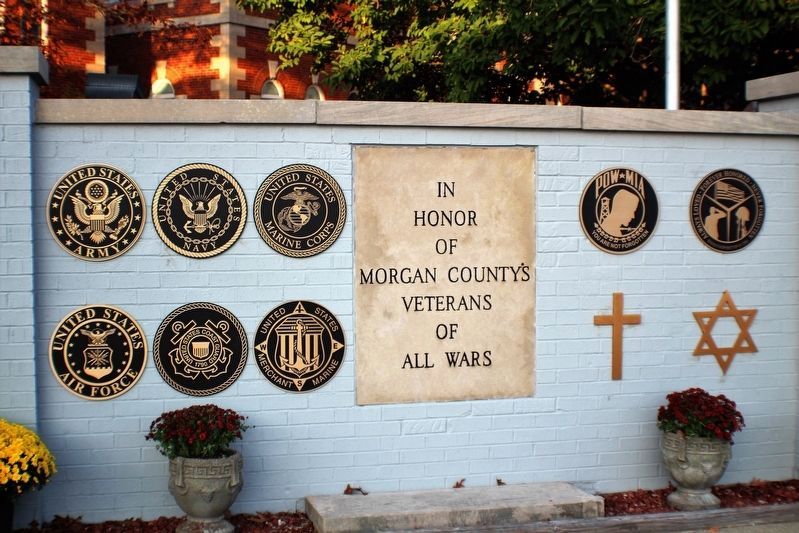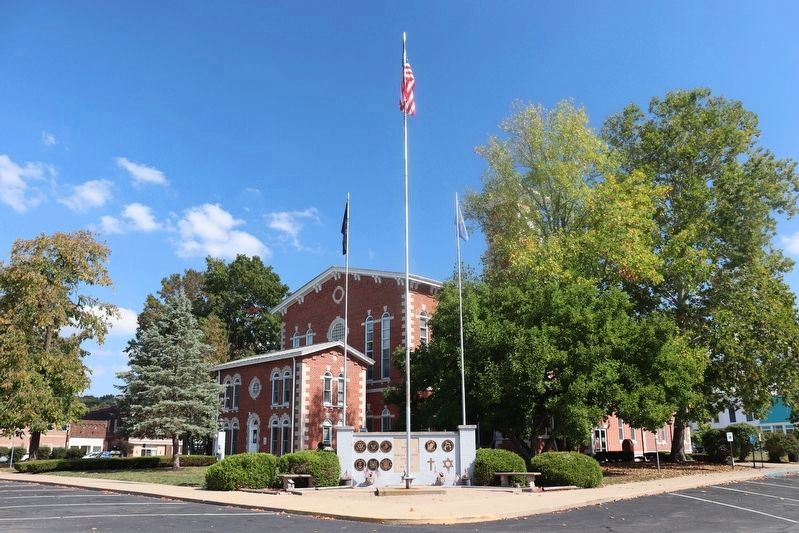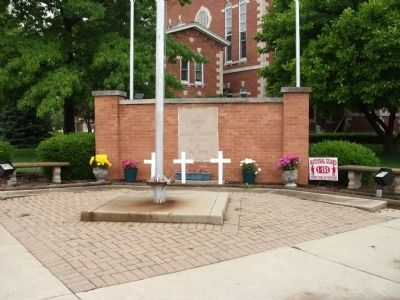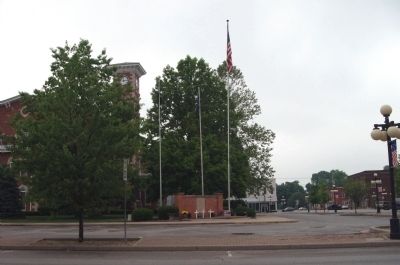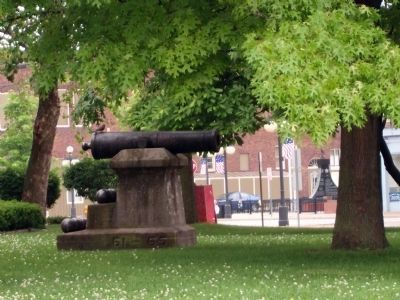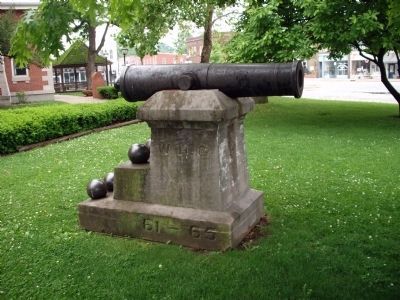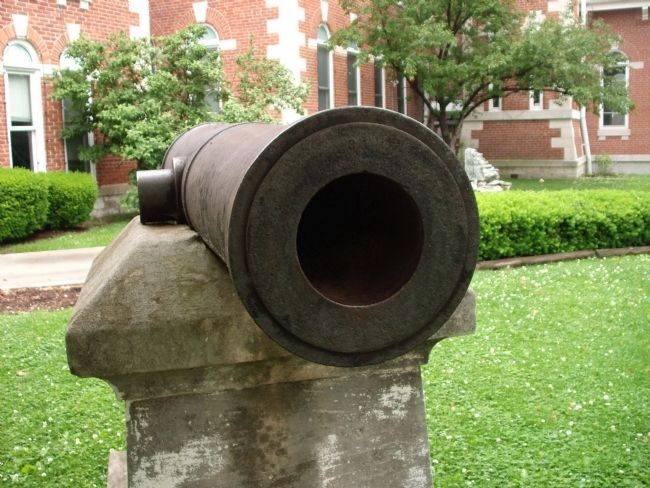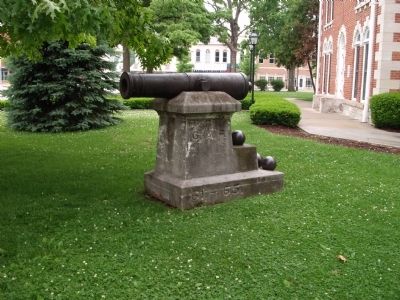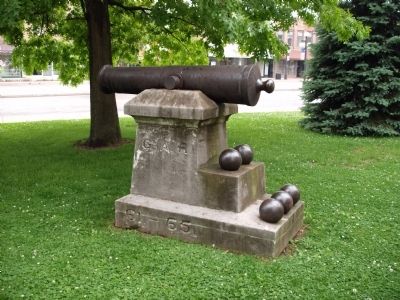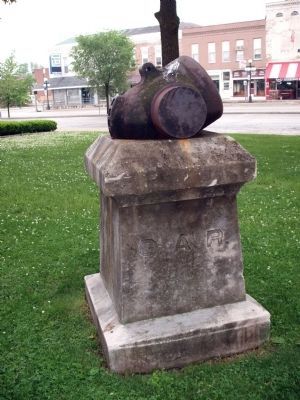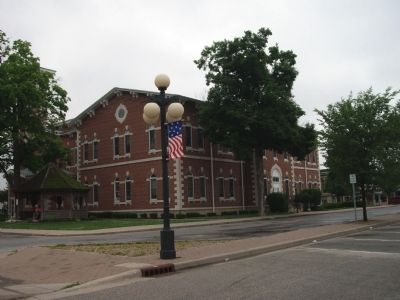Martinsville in Morgan County, Indiana — The American Midwest (Great Lakes)
Morgan County (Indiana) - Veterans
War Memorial
Topics. This memorial is listed in this topic list: Military.
Location. 39° 25.627′ N, 86° 25.697′ W. Marker is in Martinsville, Indiana, in Morgan County. Memorial is at the intersection of North Main Street and East Washinton Street, on the right on North Main Street. Touch for map. Marker is in this post office area: Martinsville IN 46151, United States of America. Touch for directions.
Other nearby markers. At least 8 other markers are within 11 miles of this marker, measured as the crow flies. Emmett Forest Branch (about 300 feet away, measured in a direct line); Paul Vories McNutt (about 300 feet away); William G. Bray (about 300 feet away); a different marker also named Emmett Forest Branch (approx. 0.3 miles away); Glenn Curtis (approx. half a mile away); Branch McCracken (approx. 10.7 miles away); Monrovia High School (approx. 10.8 miles away); Hubbard Mill (approx. 10.9 miles away). Touch for a list and map of all markers in Martinsville.
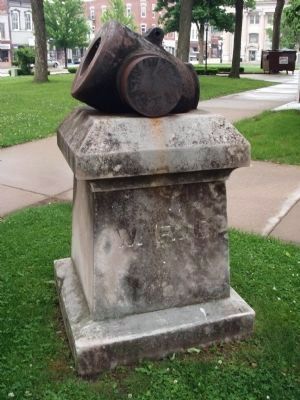
Photographed By Al Wolf, May 25, 2009
12. Side View - - 8-inch Siege Mortar
This model was approved in 1861. It was produced by three different manufacturers during the Civil War. Production method used the "Rodman" method of internal cooling. As such these were considered much stronger than previous mortars.
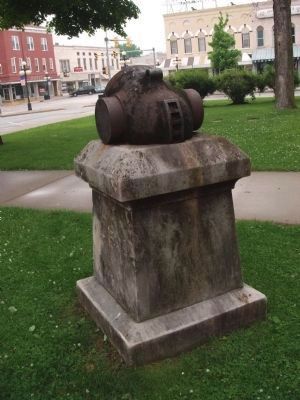
Photographed By Al Wolf, May 25, 2009
13. Back View - - Mortar
The "slot" in the back is actually part of the elevating system for the mortar. Rectangular sockets in the slot were engaged with a hand spike in order to raise or lower the mortar. Those cast early in the production cycle by Alger have three sockets. Later castings had nine. This example appears to have nine.
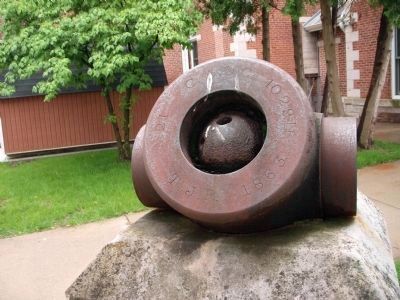
Photographed By Al Wolf, May 25, 2009
15. Muzzle of Mortar
Based on the muzzle markings, this mortar was cast by Cyrus Alger & Company, Boston, Massachusetts in 1863. It weighed 1,029 pounds when inspected by Thomas J. Rodman. It bears the registry number 21.
The shell in the bore appears to be a "carcass," used for projectiles loaded with incendiary materials.
Credits. This page was last revised on October 7, 2023. It was originally submitted on May 27, 2009, by Al Wolf of Veedersburg, Indiana. This page has been viewed 1,497 times since then and 39 times this year. Photos: 1. submitted on May 27, 2009, by Al Wolf of Veedersburg, Indiana. 2. submitted on December 15, 2020, by Bruce E McKee of Martinsville, Indiana. 3. submitted on October 1, 2023, by Trevor L Whited of Kokomo, Indiana. 4, 5, 6, 7, 8, 9, 10, 11, 12, 13, 14, 15, 16, 17, 18, 19. submitted on May 27, 2009, by Al Wolf of Veedersburg, Indiana. • Syd Whittle was the editor who published this page.
